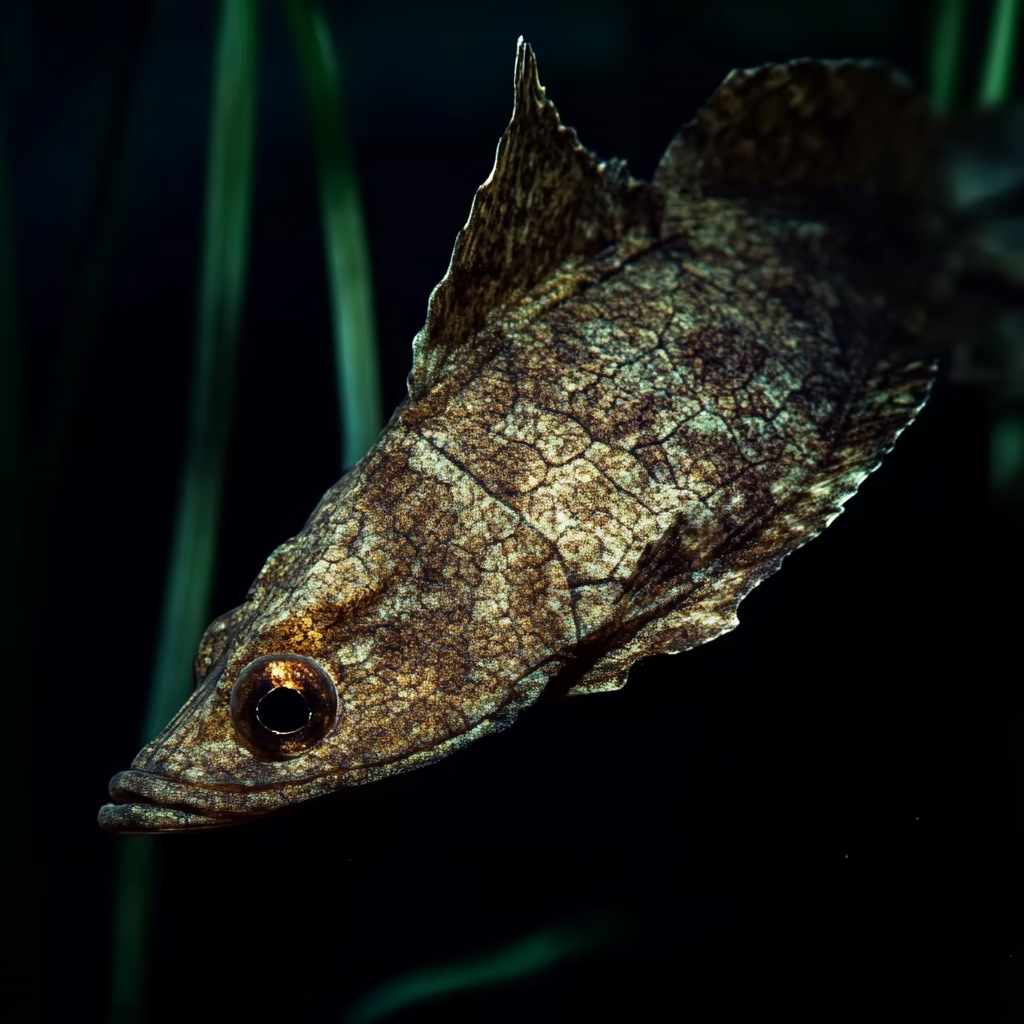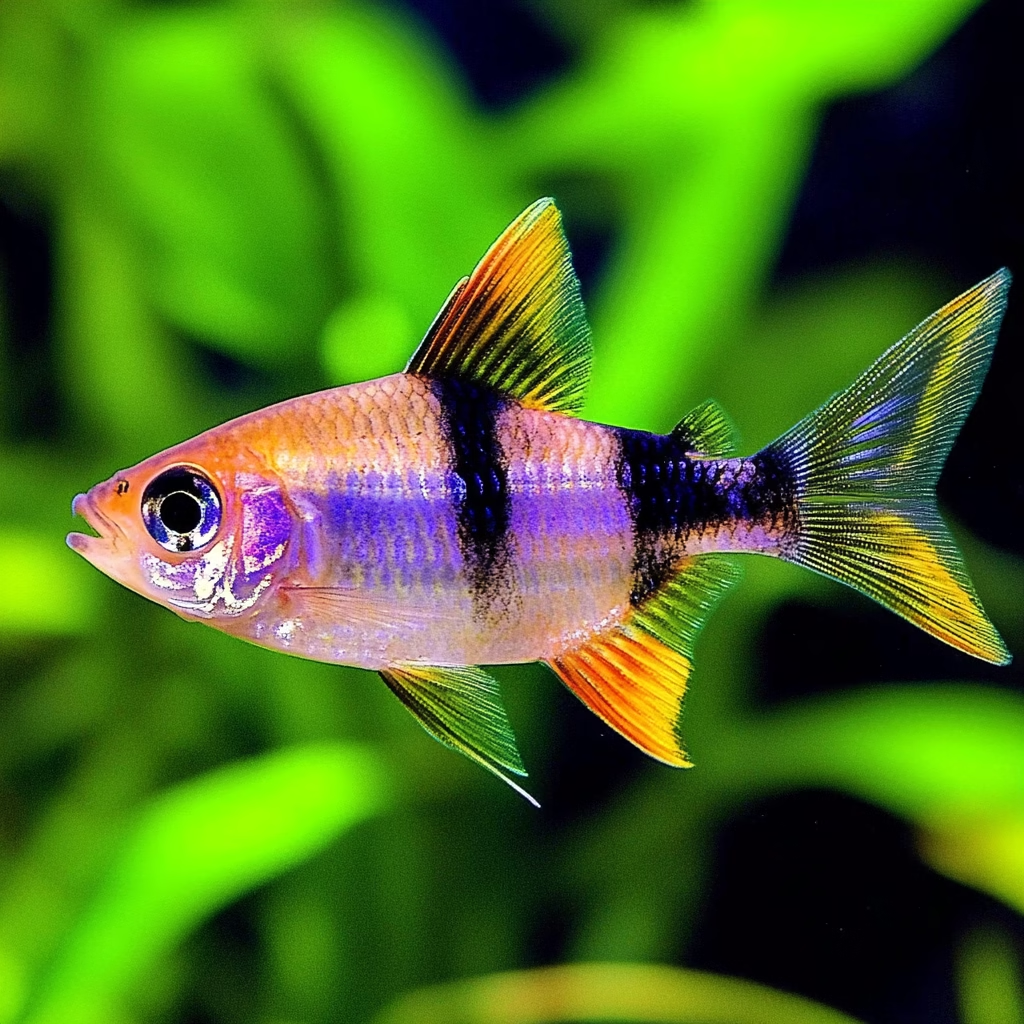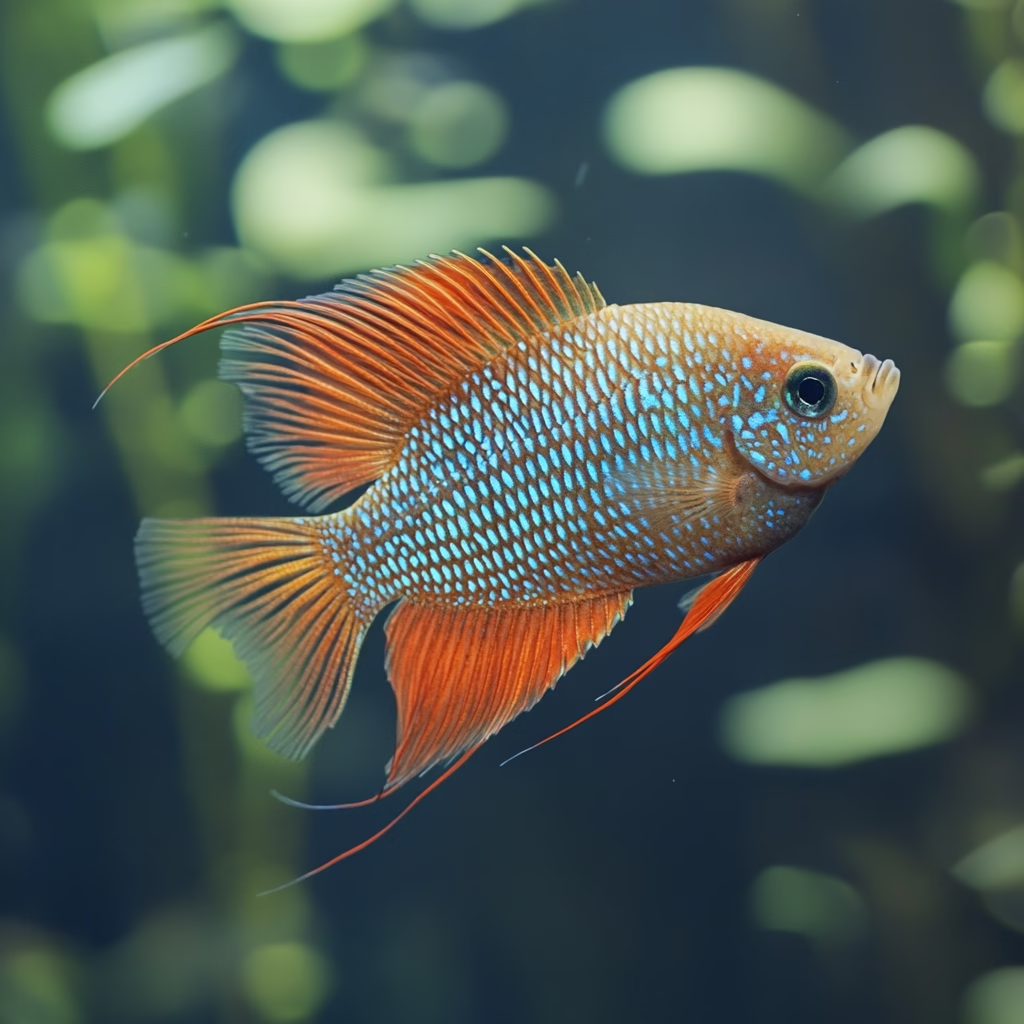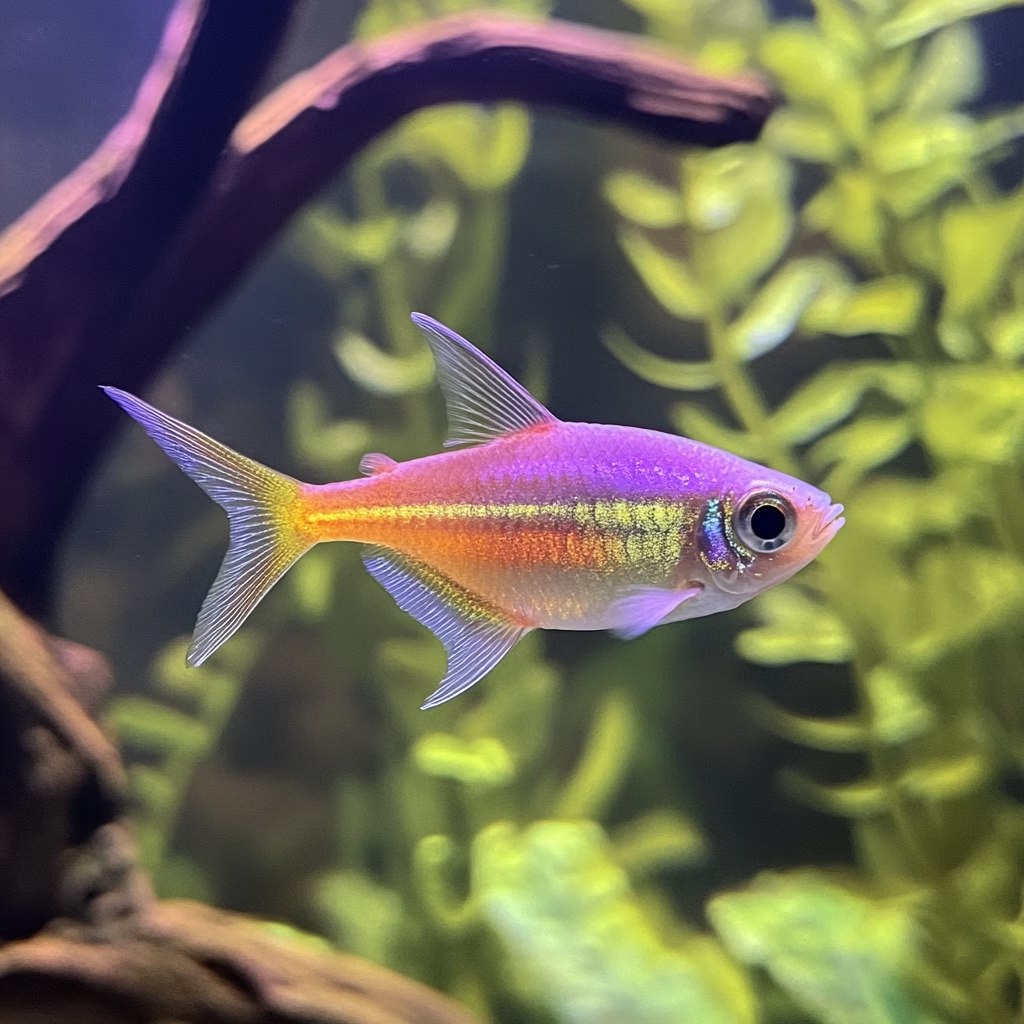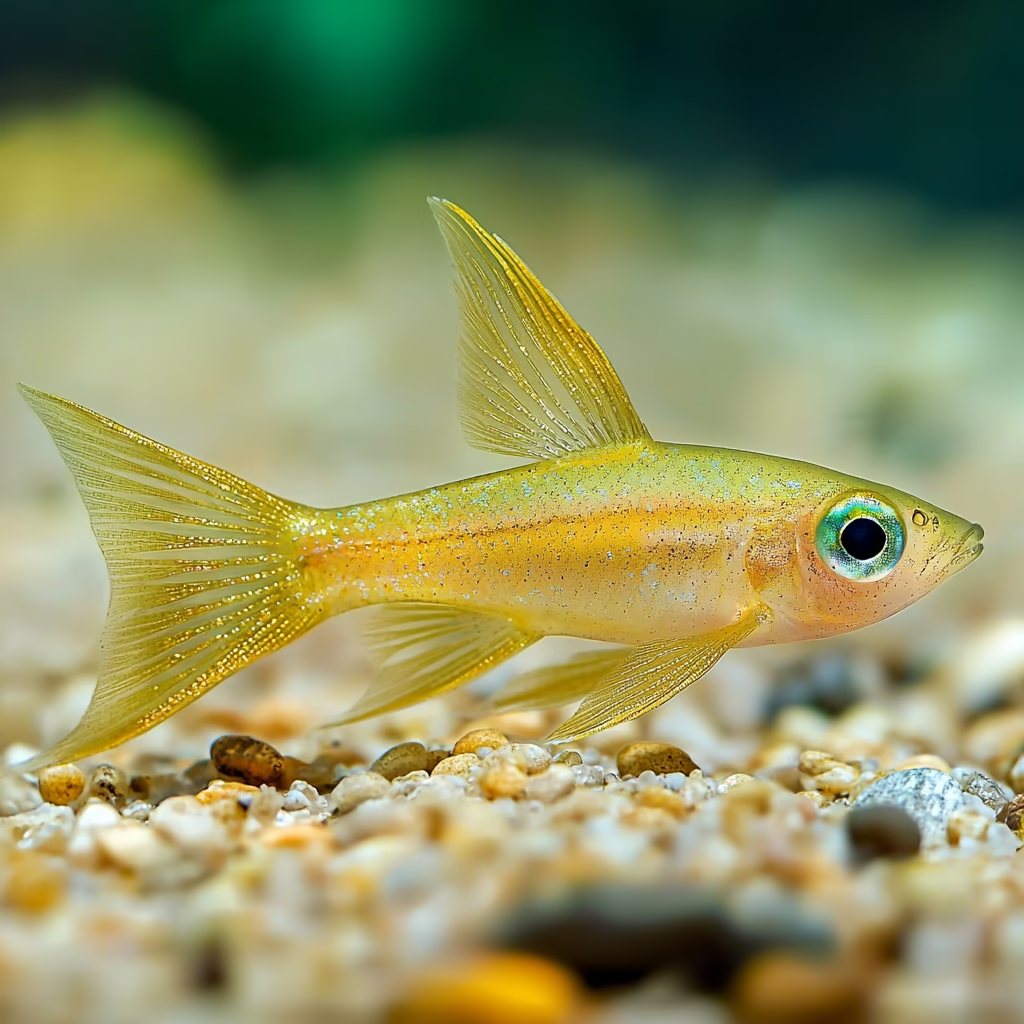The Amazon leaffish (Monocirrhus polyacanthus), also known as the South American leaffish, represents one of nature’s most remarkable examples of camouflage and mimicry. This freshwater predator, native to the Amazon River basin, has evolved an extraordinary appearance that allows it to perfectly resemble a dead, floating leaf—from its flattened, leaf-shaped body to its mottled brown coloration complete with markings that mimic leaf veins and even decay spots.
This masterful disguise serves a dual purpose: it allows the leaffish to avoid its own predators and, perhaps more importantly, to ambush unsuspecting prey with astonishing efficiency. Despite being relatively small, rarely exceeding 3.5 inches (9 cm) in length, the Amazon leaffish is a formidable predator in its ecosystem, capable of capturing prey nearly its own size thanks to its specialized hunting adaptations.
First described scientifically in 1840, the Amazon leaffish belongs to the family Polycentridae, a small group of freshwater fish known for their unusual morphology and predatory behaviors. As the only species in the genus Monocirrhus, it represents a unique evolutionary path that has resulted in one of the most specialized predatory fish in the Amazon basin.
This article explores the fascinating biology, behavior, and ecology of the Amazon leaffish, from its remarkable adaptations for camouflage and hunting to its natural habitat and the challenges it faces in an increasingly threatened Amazon ecosystem.
Physical Characteristics and Adaptations
Leaf-like Appearance and Anatomy
The Amazon leaffish’s most striking feature is undoubtedly its uncanny resemblance to a dead leaf, a form of mimicry so precise that it can be difficult even for experienced observers to spot them in their natural habitat. This remarkable disguise includes several specialized anatomical features:
- Compressed Body Shape: The leaffish has a highly laterally compressed (flattened) body that mimics the thin profile of a leaf.
- Pointed Snout and Tail: Both the anterior and posterior ends of the fish taper to points, resembling the stem and tip of a leaf.
- Cryptic Coloration: Their body displays various shades of brown, tan, and sometimes olive, often with darker mottling that resembles leaf veins or areas of decay.
- Irregular Edges: The dorsal and anal fins have uneven margins that break up the fish’s outline, further enhancing the leaf illusion.
- Textured Skin: Small irregularities on the skin surface mimic the texture of a leaf’s surface.
The fish’s eyes, which might otherwise give away its identity, are effectively concealed within this camouflage pattern, with dark diagonal stripes often running through the eye area to break up its circular shape. The mouth is large and highly protrusible, allowing for the rapid suction feeding necessary for its ambush predator lifestyle.
Specialized Hunting Adaptations
Beyond its remarkable camouflage, the Amazon leaffish possesses several specialized adaptations that make it an extraordinarily effective predator:
- Protrusible Mouth: The leaffish can extend its mouth outward with remarkable speed, creating powerful suction to draw in prey.
- Sensory Barbel: A small, thread-like barbel (the feature referenced in its genus name Monocirrhus, meaning “single cirrus”) extends from its lower jaw and may function as a sensory organ or as a lure to attract prey.
- Large Gill Cavity: An expanded gill chamber enhances its suction feeding capability.
- Excellent Vision: Despite their concealed appearance, leaffish have well-developed eyes that provide the visual acuity needed for precise strikes.
- Controlled Buoyancy: Specialized adaptations allow the leaffish to maintain neutral buoyancy while floating at angles that enhance its leaf disguise.
These combined adaptations create one of nature’s most perfectly specialized ambush predators, capable of remaining motionless for extended periods while waiting for potential prey to venture within striking distance.
Habitat and Distribution
Natural Range in the Amazon Basin
The Amazon leaffish is native to the expansive Amazon River basin, with its range primarily encompassing:
- The main Amazon River and many of its tributaries
- Blackwater streams and rivers of the Rio Negro system
- Flooded forest areas (igapós) during the rainy season
- Quieter backwaters and lagoons connected to larger river systems
Their distribution extends across several South American countries, including Brazil, Colombia, Peru, Ecuador, and parts of Venezuela, primarily within lowland areas of the Amazon basin. While not typically found in fast-flowing sections of rivers, they thrive in areas where water movement is gentle to moderate and where ample vegetation provides both cover and hunting opportunities.
Preferred Microhabitats
Within their broader distribution, Amazon leaffish show distinct preferences for specific microhabitats:
- Submerged Vegetation: Areas with abundant aquatic plants provide both hiding places and hunting grounds.
- Leaf Litter: Accumulations of fallen leaves on the water’s surface or settled on the bottom create perfect hunting grounds where the leaffish’s camouflage is most effective.
- Flooded Forests: During seasonal floods, leaffish may move into newly inundated areas where prey is abundant.
- Structurally Complex Areas: Locations with submerged roots, branches, and other structures that create complex underwater environments.
They typically inhabit shallow to medium-depth waters, usually remaining in the upper portions of the water column where their leaf mimicry is most effective and where smaller fish that comprise their prey are abundant. Their preference for areas with natural leaf litter is particularly notable, as it provides the perfect background against which their camouflage operates most effectively.
Behavior and Ecology
Hunting Strategy and Predation
The Amazon leaffish employs one of the most specialized hunting strategies in the freshwater world, a perfect example of an ambush predator that relies on stealth and surprise:
- Positioning: The leaffish positions itself among actual leaves or plant debris, often floating at an angle that enhances its leaf-like appearance.
- Patience: It can remain almost completely motionless for extended periods, sometimes hours, waiting for potential prey to approach.
- Slow Approach: When prey is detected but still out of strike range, the leaffish may drift almost imperceptibly toward its target, often using gentle fin movements that mimic a leaf being moved by water currents.
- Lightning Strike: When prey comes within range (typically just a few centimeters), the leaffish launches its attack with extraordinary speed, extending its highly protrusible mouth to create powerful suction that draws in the prey.
- Consumption: After a successful strike, the prey is swallowed whole, with the leaffish often returning to its ambush position to await another opportunity.
This hunting strategy is remarkably effective, with studies suggesting success rates significantly higher than many other predatory fish. Their primary prey consists of smaller fish, though they will occasionally capture aquatic invertebrates and even small amphibians when available.
Reproductive Behavior and Life Cycle
The reproductive biology of the Amazon leaffish includes several interesting aspects:
- Spawning Behavior: During breeding, males establish and defend territories, often centered around suitable spawning sites like broad leaves or flat surfaces.
- Courtship: Males perform specific displays to attract females, including fin extensions and body quivering.
- Egg Deposition: Females lay adhesive eggs on flat surfaces, typically plant leaves or occasionally other submerged objects.
- Parental Care: Unlike many fish, Amazon leaffish exhibit parental care, with males typically guarding the eggs and newly hatched fry.
- Development: Eggs hatch within 2-3 days, producing tiny, transparent larvae that quickly develop their predatory capabilities.
- Maturation: Young leaffish begin developing their characteristic leaf-like appearance within weeks, though they don’t reach sexual maturity until several months of age.
The species does not undergo any dramatic morphological changes during development; rather, young fish progressively enhance their leaf mimicry as they grow, with juvenile leaffish already displaying the basic leaf-shaped body and cryptic coloration that will become more refined as they mature.
Conservation Status and Threats
Current Population Status
The Amazon leaffish is not currently listed on the IUCN Red List of Threatened Species, primarily due to insufficient data regarding its population numbers and trends across its range. This lack of comprehensive assessment highlights one of the challenges in conservation efforts for many Amazonian species—limited scientific monitoring in remote regions makes it difficult to accurately determine population statuses.
Local reports from areas where the species has been historically common suggest that populations remain relatively stable in undisturbed habitats, though systematic studies are lacking. The species’ specialized habitat requirements and predatory nature mean that it is generally not abundant anywhere within its range, typically occurring at relatively low population densities even in suitable habitats.
Environmental Threats and Human Impact
Despite the current lack of official endangered status, the Amazon leaffish faces several significant threats:
- Habitat Destruction: Deforestation of the Amazon rainforest directly impacts watershed health and aquatic habitats, with implications for numerous species including the leaffish.
- Water Pollution: Agricultural runoff, mining operations, and urban pollution increasingly affect water quality in many parts of the Amazon basin.
- Hydroelectric Development: Dam construction alters river flow patterns and flooding cycles that are critical to many species’ life cycles.
- Climate Change: Shifting rainfall patterns and temperature regimes threaten to disrupt the delicate ecological balance of Amazonian aquatic ecosystems.
- Collection for Aquarium Trade: While not harvested on an industrial scale, collection for the ornamental fish trade may impact local populations in some areas.
The leaffish’s specialized nature as an ambush predator dependent on particular habitat conditions makes it potentially vulnerable to environmental changes that might disrupt either its hunting strategy or the populations of prey species upon which it depends.
The Amazon Leaffish in Aquariums
Popularity Among Specialist Hobbyists
The Amazon leaffish has developed a devoted following among specialized aquarium hobbyists fascinated by its unique appearance and hunting behavior. However, it remains relatively uncommon in the broader hobby due to several factors:
- Feeding Challenges: As specialized predators adapted to live prey, leaffish often initially refuse prepared foods, requiring dedicated feeding strategies.
- Tank Requirements: They need carefully designed aquariums that mimic their natural habitat, with appropriate hiding places and hunting zones.
- Temperament: Their predatory nature makes them unsuitable for community aquariums with smaller tank mates.
- Specialized Care: Maintaining water quality parameters that match their native blackwater habitats requires additional knowledge and equipment.
Despite these challenges, successful keeping of Amazon leaffish can be extremely rewarding for experienced hobbyists, offering the opportunity to observe one of nature’s most remarkable examples of evolutionary specialization up close.
Captive Care Requirements
For those interested in keeping Amazon leaffish, several specialized care requirements should be considered:
- Tank Setup: A minimum 20-gallon aquarium for a pair, densely planted with broad-leaved plants and floating vegetation. Dim lighting and tannin-stained water help replicate their natural habitat.
- Water Parameters: Soft, slightly acidic water (pH 6.0-6.8) with low to moderate hardness. Temperature should be maintained between 75-82°F (24-28°C).
- Filtration: Gentle filtration that creates minimal current, as these fish prefer still to slow-moving waters.
- Feeding: Initially, they typically require live feeder fish, though some specimens can eventually be trained to accept frozen foods like bloodworms, brine shrimp, or small pieces of fish and shrimp.
- Tank Mates: Best kept either alone or with significantly larger, peaceful species that won’t be viewed as prey.
Ethical considerations around using live feeder fish have led some hobbyists to develop alternative feeding strategies, including the use of feeding tongs to offer frozen foods in a manner that triggers the leaffish’s predatory response.
Scientific Significance and Research
Studies on Camouflage and Mimicry
The Amazon leaffish represents one of the most perfect examples of mimicry in the vertebrate world, making it a subject of significant interest to evolutionary biologists and researchers studying adaptive camouflage:
- Evolutionary Development: Scientists study how such precise mimicry evolved and the selective pressures that drove its development.
- Biomechanics: The leaffish’s unique body shape and movement patterns provide insights into the physical adaptations necessary for effective camouflage.
- Predator-Prey Dynamics: Research on the leaffish’s hunting success rates helps understand the evolutionary “arms race” between predators and prey.
- Visual Ecology: Studies on how potential prey perceive (or fail to perceive) the leaffish offer insights into animal vision and pattern recognition.
This research has broader applications beyond understanding the leaffish itself, potentially informing fields ranging from military camouflage design to the development of biomimetic technologies.
Ecological Indicator Value
As specialized predators with specific habitat requirements, Amazon leaffish can serve as valuable ecological indicators:
- Water Quality: Their presence often indicates relatively pristine aquatic environments with minimal pollution.
- Habitat Integrity: Healthy leaffish populations suggest intact ecosystem processes and food webs.
- Biodiversity Health: As mid-level predators, their presence generally correlates with diverse prey populations and overall ecosystem functioning.
This indicator value makes the species potentially important for conservation monitoring, though more research is needed to fully understand their population dynamics and responses to various environmental stressors.
Cultural and Educational Significance
In Public Aquariums and Education
The Amazon leaffish’s extraordinary appearance and specialized adaptations make it an excellent educational ambassador for topics including:
- Evolutionary Adaptation: Their perfect leaf mimicry demonstrates how natural selection can shape organisms to fit specialized niches.
- Predator-Prey Relationships: Their hunting strategy illustrates the complex interactions that drive ecological communities.
- Amazonian Biodiversity: As a uniquely specialized Amazonian species, they highlight the remarkable diversity of the region’s freshwater ecosystems.
- Conservation Awareness: Their dependence on specific habitat conditions underscores the importance of protecting intact ecosystems.
For these reasons, Amazon leaffish are featured in several major public aquariums worldwide, typically in specialized Amazonian habitat exhibits where their remarkable camouflage can be observed by visitors (often with the help of interpretive signs pointing out where to look for these masters of disguise).
Representation in Media and Literature
While not as widely known as some more iconic Amazonian species, the Amazon leaffish has appeared in:
- Nature documentaries highlighting extreme adaptations and camouflage
- Scientific literature on mimicry and predator-prey relationships
- Aquarium hobby publications and specialized books on unusual freshwater fish
- Educational materials about rainforest biodiversity and adaptation
Its increasing presence in these media helps raise awareness about both the species itself and the broader issues affecting Amazonian aquatic ecosystems.
Conclusion: The Amazon Leaffish as an Evolutionary Marvel
The Amazon leaffish stands as a testament to evolution’s capacity to produce extraordinarily specialized organisms perfectly adapted to their ecological niches. From its flattened, leaf-shaped body to its patient hunting strategy, every aspect of this remarkable fish has been shaped by natural selection to create one of nature’s most effective disguises.
In an era when the Amazon rainforest faces unprecedented threats, the leaffish serves as a powerful reminder of the incredible and often overlooked biodiversity found in freshwater ecosystems. Each specialized species like the Amazon leaffish represents millions of years of evolutionary history and ecological relationships that, once lost, cannot be recovered.
For scientists, conservationists, and nature enthusiasts alike, the Amazon leaffish continues to inspire wonder at the intricate adaptations that can arise through natural selection. Its perfect leaf mimicry reminds us that sometimes the most remarkable evolutionary innovations are not about being the biggest or fastest, but about becoming virtually invisible—hiding in plain sight amidst the fallen leaves of the Amazon’s flooded forests.

